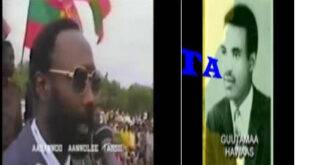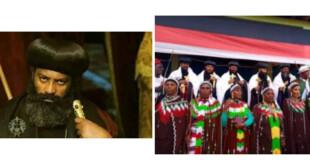April 26, 2013 (World Politics Review) – The death of Prime Minister Meles Zenawi in August 2012 marked the end of an era in contemporary Ethiopian politics. After defeating the brutal Derg regime in 1991, Meles headed the powerful ruling party that led the country of more than 80 million through a massive transformation. But it is a mistake to think of his tenure as a period of one-man rule or his death as creating either a political vacuum or an opportunity for liberal reform, as power, authority and resources never rested in Meles’ hands alone.
Meles’ Ethiopian Peoples Revolutionary Democratic Front (EPRDF) created an Ethiopia based around ethnically defined regions and political parties, state control over land and other key economic assets and a strong authoritarian political party. Meles’ aim was to create a developmental state through revolutionary democracy, a project that more closely resembled the Chinese model than Western notions of liberalism. Levels of economic growth have been high and the expansion of health care impressive. At the same time, however, Ethiopia has effectively criminalized dissent and made it virtually impossible for civil society organizations to engage in human rights monitoring or democratization initiatives.
Many reflections on Meles’ leadership have pointed to his personal qualities and his complicated and often quite contentious legacies. U.S. Ambassador to the U.N. Susan Rice gave a laudatory speech at his funeral, calling him “an uncommon leader, a rare visionary and a true friend to me and many.” But Meles left behind a larger set of interlinked interests that include key figures in each of the ethnic parties that make up the EPRDF coalition; powerful economic institutions and mass organizations controlled by leading members of the ruling party; and, most importantly, the large and disciplined military and security services. This old order remains fundamentally in place even after Meles’ passing. While formal authority has shifted to Hailemariam Dessalegn, a former deputy prime minister who has now ascended to the top post, it is clear that power remains embedded within this network of party, economic and military institutions, at least for now.
The EPRDF is the quintessential authoritarian party. In 2010 the ruling coalition and its allies won 99.6 percent of the seats in the national parliament, and by 2012 an estimated 6 million people had joined the party. Many sign up to gain access to government goods or to have a realistic chance of obtaining a position in the civil service. From the most remote village to the center of power, the EPRDF controls all political and economic space, with few distinctions between party and government. Meles’ death did not provide opportunities for the shattered, repressed and increasingly ineffectual opposition to engage in politics effectively. There are no public signs of a dissident network within the military or ruling party, and it is nearly impossible to mobilize outside of those institutions.
Still, while the networks of power have proved robust, the EPRDF has undergone a remarkable transition of party leaders in recent years. A number of senior figures stepped down from the coalition’s executive committee in 2010, notably Foreign Minister Seyoum Mesfin and Trade Minister Girma Biru, who were sent to embassies some distance from the political action. The EPRDF Congress last month saw the rise of a younger generation that did not participate in the armed struggle but rather had moved up party ranks on the basis of technocratic capabilities and loyalty.
The EPRDF remains, however, a coalition of ethnically based parties that differ sharply in terms of size, experience in the liberation struggle and ability to administer their respective regions. The inherent tension between centralized power and ethnic- and region-based parties remains strong. If a cabinet member from the ethnic Amhara party, for example, is replaced by someone from the ethnic Oromo party, it is perceived as a shift in the relative power of the two ethnic groups, even if the EPRDF as a whole remains in charge. This underlying ethnic positioning was evident when Hailemariam, from the southern wing of the party, appointed representatives of the Tigray, Amhara and Oromo wings as deputy prime ministers so that each constituent party retained a seat at the table.
Such tensions could be exacerbated by economic factors. Ethiopia experienced double-digit growth between 2004 and 2008, and the building boom in Addis Ababa and the construction of roads and regional universities is impressive. Hailemariam remains committed to Meles’ ambitious Growth and Transformation Plan (GTP) for 2010-2015, which projected GDP growth of 10-15 percent and massive public sector investment in infrastructure, mining and energy. The Millennium Dam on the Blue Nile is the symbolic centerpiece of the plan and will be the largest hydroelectric power plant in sub-Saharan Africa when completed. It is not clear, however, whether Ethiopia will be able to finance all of its proposals. Actual economic growth is forecast to be closer to 7 percent from 2013-2017 — quite good, but not enough to meet the GTP’s targets. Ethiopia’s stability depends upon a rapidly growing economy, and a decline will create enormous political pressures.
Many strong, authoritarian parties shatter when succession crises create intraparty conflicts. While the EPRDF regime has held together despite the death of its longtime leader, it will be an extraordinary accomplishment if the EPRDF can manage the larger generational transition in which the distribution of power among different ethnic-based factions is in flux and many ambitious actors now see a once-in-a-lifetime chance to make it to the top. The period leading up to the 2015 elections will test Hailemariam’s political skills. If one or another faction perceives that it has a better chance of gaining or retaining power by making an alternative coalition and challenging the old guard, then the EPRDF may prove brittle and shatter. Such a scenario, while by no means inevitable, has the potential to become violent and to have significant spillover effects throughout the war-torn Horn of Africa.
Terrence Lyons is associate professor of Conflict Analysis and Resolution and co-director of the Center for Global Studies, George Mason University.




